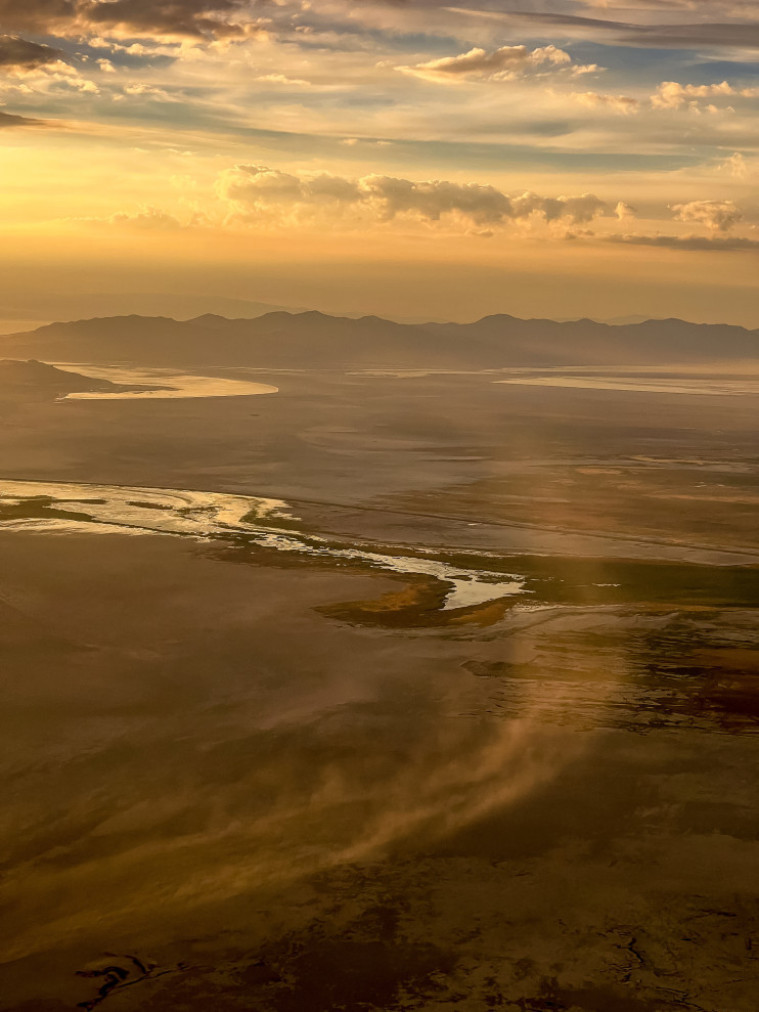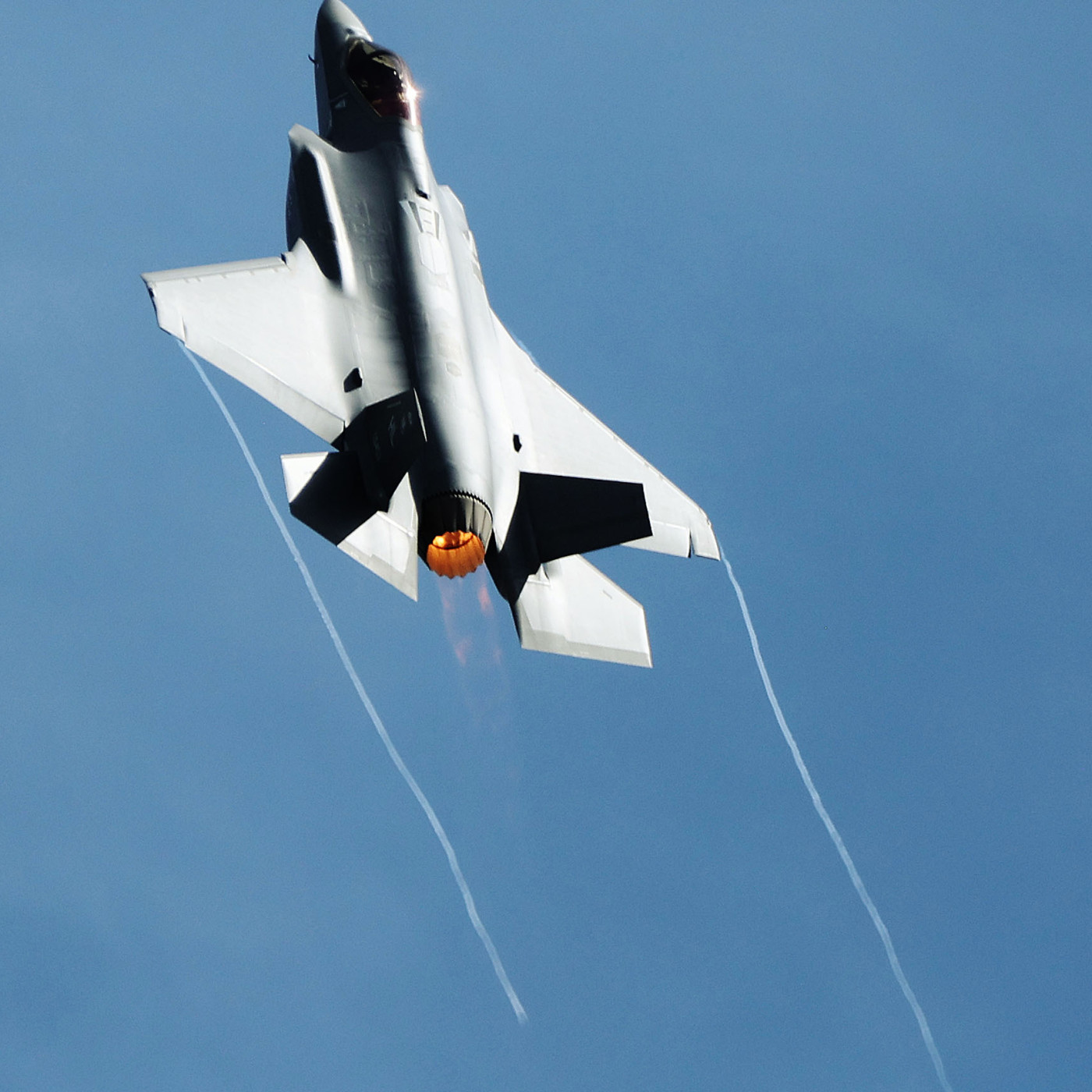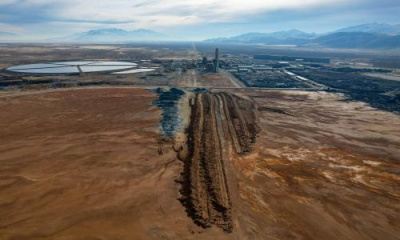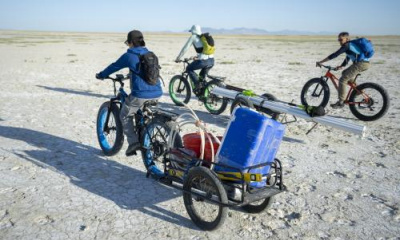Lone Pine, Calif — At Owens Lake in California, once the nation’s most notorious site for dust pollution so intense you could taste it in your mouth, the mission of the nation’s largest on-land naval base was compromised.
As the Great Salt Lake has dropped to historically low levels with more than 800 square miles of exposed lakebed, does that same threat loom for Utah’s military installations?
It’s a concern and part of the discussion, but it hasn’t reached crisis mode — yet.
“It has come up in conversation,” said Tage Flint, president and chief executive officer of the Utah Defense Alliance, which advocates to strengthen Utah’s military missions and boost the aerospace industry.
The California story
Dust storms in the early 1980s in California prompted a flurry of studies funded by the state, the China Lake Naval Air Weapons Center, the National Oceanic and Atmospheric Administration, the U.S. Environmental Protection Agency and the U.S. Geological Survey, among others.
The studies found that blowing dust, known as PM10, that was coming off the south end of the dried-up Owens Lake as a result of storms was horrendous.
The Great Basin Unified Air Pollution Control District conducted extensive monitoring of the downwind dust related to stabilizing the lakebed.
A scientific report by the U.S. Geological Survey published in the early ’90s said Owens’ dust storms regularly suspended operations at the China Lake naval center resulting in millions of dollars in economic losses. The dust caused impacts to Edwards Air Force Base as well.
Phill Kiddoo — air pollution control officer with the Great Basin Unified Air Pollution Control District, which is the regulatory authority over Owens Lake and Mono Lake to the north — said the concern was so great the Navy was doing its own studies. The Department of Defense, in fact, was one of the players urging federal action to mitigate the problem because operations at China Lake were curtailed as many as 10 times a year.
The federal action came in 1987, Kiddoo said, when the EPA designated the Owens Lake area as a “nonattainment” site for PM10 pollution.
It was a hard lift, Kiddoo added, looking back on history while noting it was before his time as a regulatory official.
“There was the Great Basin district, and at the time it probably had a staff of four, so that is a small voice,” he said. “So when the military finally started engaging, and I think there was a lot of collaboration with the district, we needed the partners.”
Kiddoo said in part, the military brought some badly needed muscle to the table to give mitigation an aggressive kick-start.
With 99.4% of the dust mitigation achieved to date at Owens Lake by the Los Angeles Department of Water and Power — which drained the lake — the scare may be over in that region.
But what about the Great Salt Lake?

Dust blows across the dry lakebed of the Great Salt Lake near Salt Lake City on Friday, Aug. 12, 2022. Spenser Heaps, Deseret News
A dusty future?
When asked this summer if concerns about dust pollution from the Great Salt Lake got the military involved in discussions for potential mitigation, Utah House Speaker Brad Wilson, R-Kaysville, said not really.
“They will be now,” he added, responding to the nexus with Owens Lake and the naval station.
Wilson said he was planning meetings with top officials at Utah’s military operations.
There is a lot at stake: Hill Air Force Base. The Utah Test and Training Range in the West Desert. The Army National Guard, and more.
Wilson did stress the goal is to do enough preemptive work now, in the current drought that has slogged on for 23 years, to never come close to what happened at Owens Lake in California.
Rep. Blake Moore, R-Utah, represents northern Utah — including Hill Air Force Base — and says he is concerned about the impact of dust on the state’s military operations.
“We’re talking 10% of Utah’s gross domestic product, plus or minus a few points, that is defense related. And so much of that is derived because of the strength of Hill Air Force Base,” he said. “Owens Lake is a classic example of what can happen if you don’t put efforts on it.”
Flint did say that Hill Air Force Base is likely far enough east of the Great Salt Lake to not be compromised because the jets can be up and out before they are affected, but the risk remains.
“If there is a perceived risk of any interruptions of any kind of operations, I think that could change minds in a hurry, and they will be actively at the table,” he said. “There is a lot of things going on out there that are a matter of national defense.”
What's your response to At Water's Edge?
Does this reporting project make you feel hopeful? Concerned? Inspired? Surprised?
Selected responses will be used on social media, on our website or in our newsletter.









